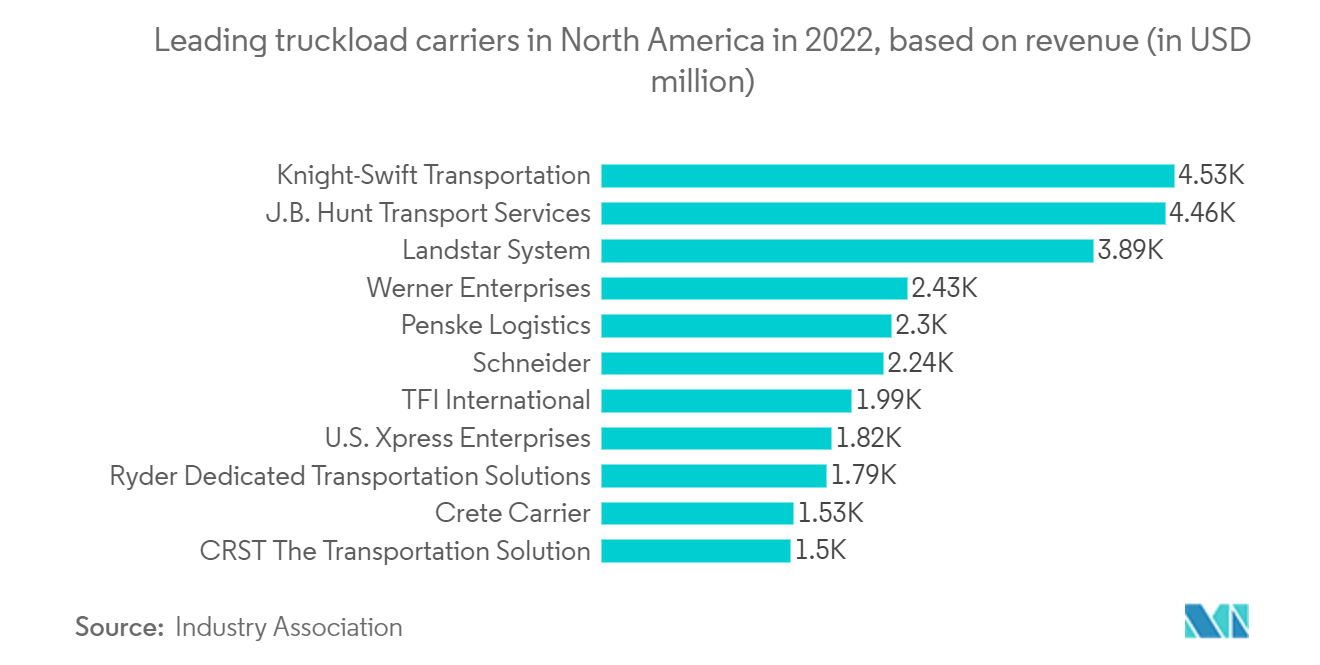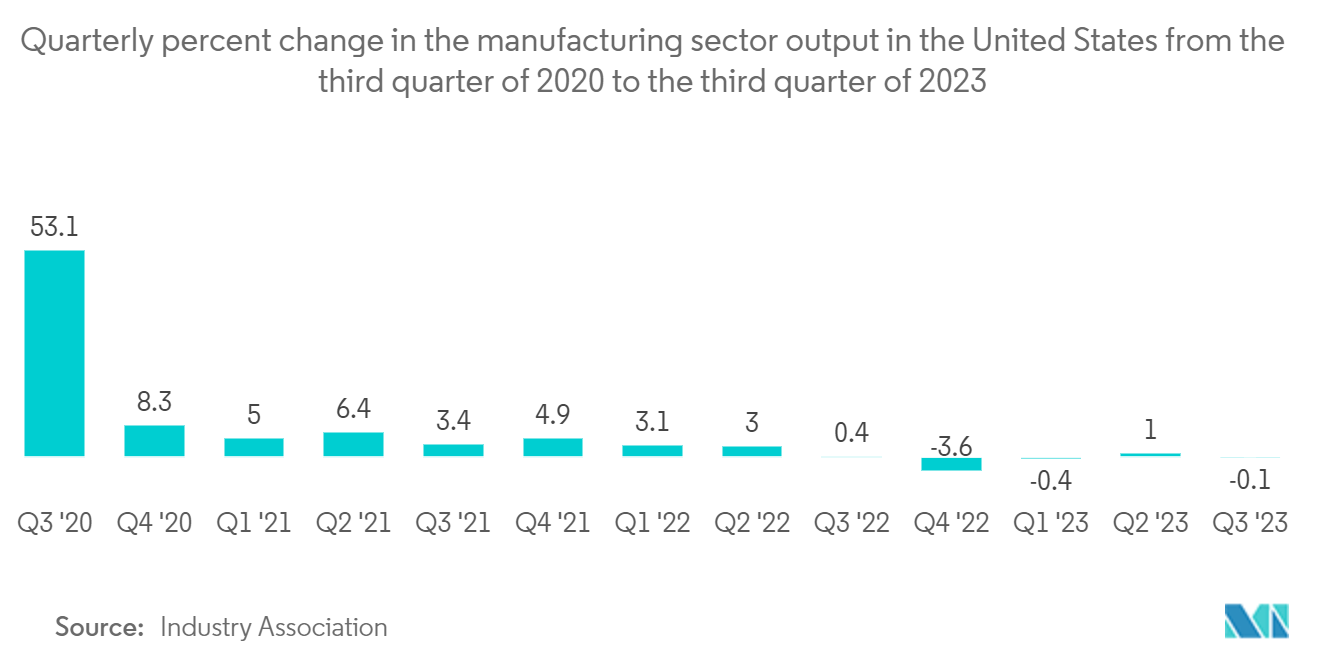Market Trends of United States Freight Brokerage Industry
FTL Service Has Gained Momentum in the Country in Recent Years
- In recent years, the United States has experienced substantial growth in full truckload (FTL) services owing to the demand for inland freight movement and cross-border trade between the United States, Canada, and Mexico. Full truckload freight brokerage is still in a growth phase and is a major attraction for new shippers to penetrate the domestic market. However, established shippers seek long-term contracts with brokerage firms and carriers to gain a leading position in the international freight forwarding industry.
- FTL brokers facilitate the transportation service for shippers and monitor the carriers' shipments. Many freight brokerage firms are strengthening their digital marketplace and are adopting technology, such as automated pricing, application programming interface (API) connectivity, data science, and internally facing technology. Some of the key players in the US truckload freight brokerage market are C.H. Robinson, XPO Logistics, Total Quality Logistics, Echo Global Logistics, and Coyote Logistics.
- In January 2023, Schneider National Inc. of Green Bay announced that it is investing in TuSimple, a San Diego self-driving technology company. Some of the company's customers include UPS, the US Postal Service, and McLain Co. The company also has partnerships with tech giants like Nvidia and Amazon. In November 2022, Google and JB Hunt announced a multi-year strategic alliance to accelerate JB Hunt's digital transformation and collaborate on supply chain platform technology. Powered by Google Cloud, JB Hunt is expected to expand its JB Hunt 360° platform that digitally connects shipments and available capacity. By leveraging Google's Data Cloud, JB Hunt 360 may use artificial intelligence and machine learning tools to predict outcomes, empower users, and make informed decisions.

Manufacturing and Automotive Segment is Driving the Market in the Future
- The booming automotive industry in the United States demands automotive logistics solutions with maximum availability and reliability for port-to-port transportation, just-in-time (JIT) deliveries, or just-in-sequence (JIS) deliveries. The growth in this market is mainly driven by factors such as the growing automobile production in emerging economies and strict regulatory standards imposed by governments on the automotive industry. For instance, in 2023, the US auto industry witnessed robust sales, with approximately 3.12 million cars sold. Furthermore, the total sales of cars and light trucks in the US market reached a notable 15.5 million units.
- The growing adoption of electric vehicles, increasing awareness among consumers regarding product quality and safety, and the incorporation of technological advancements, with the rising adoption of connected devices in the automotive industry, offer growth opportunities to the market players. The NAFTA rules of origin for automotive products are based on a tariff change alone or a tariff change and a regional value content requirement. The agreement requires that the regional value content for these products be calculated using the net cost method.
- The regional value content requirement for autos and light vehicles and their engines and transmissions will be 50% under the net cost method when the agreement enters into force; this percentage will be increased to 62.5% over an eight-year transition period. In 2022, factory activity in the United States grew at its slowest rate in more than a year and a half, owing to an increase in layoffs, and manufacturers were concerned about supply over the summer due to China's zero-tolerance policy.
- The decline of the US manufacturing industry has increased inequality and harmed the country's global competitiveness. Manufacturing revitalization could add 1.5 million well-paying jobs to the economy and revitalize marginalized communities. Manufacturing could experience a renaissance as a result of innovation and digitization. Years of uneven growth across sectors and geographies have resulted in some industries flourishing while others faltering.


